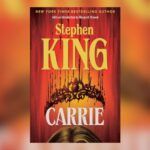
My Comics Junk Drawer: And A Bandolier of Razor Blades
There are moments in comics that stick with you. fragments of prose, knots of plot, a panel of art that burns itself into your retina. Dave collects these moments and puts them them all into a drawer.
I’ve made a nod toward the Marvel Comics’ character Longshot on this site before, talking about how I picked up the fourth issue of the original 1980s comics miniseries from the spinner rack.
 But that wasn’t enough. I want to talk about Longshot a bit more because he’s a character that’s stuck with me for 30 years, and while the black leather and the bandolier of razor blades may have drawn me to him in the first place, there’s something so fundamentally… odd… about Longshot that makes him a permanent fixture in my junk drawer.
But that wasn’t enough. I want to talk about Longshot a bit more because he’s a character that’s stuck with me for 30 years, and while the black leather and the bandolier of razor blades may have drawn me to him in the first place, there’s something so fundamentally… odd… about Longshot that makes him a permanent fixture in my junk drawer.
Surely it was the visual that brought me to him first. Arthur Adams’ first mainstream work sat somewhere between the powerhouse visionaries John Byrne and George Perez and the soon-to-hit-the-scene renegades like Jim Lee, Todd MacFarlane, Rob Liefeld, and the rest of the Image gang. In fact, you can definitely see Adams slightly exaggerated figures and detailed line as an influence on Lee and MacFarlane, who would hit the scene just a few years later.
I think Longshot hit me with a contrast to the bulky super-heroes that ruled the day — I was used to the the bulky, broad-chested figures penciled by Byrne or Walt Simonson. They were the comics equivalent of the 80s action stars that ruled the day — the Stallones and Schwarzeneggers.
But Longshot creeps into the scene with a lithe figure, more Bruce Lee than Schwarzenegger. Or maybe more Patrick Swayze… you know, with that hair and all.
He wears a leather jumpsuit, a little more forgiving than a Superman unitard, but… it kind of bunches awkwardly, doesn’t it? He’s got buckles and pouches, a few years before that would become a synonym for 90s super-hero couture.
Under Art Adams hand, Longshot is a lithe, Legolas-like acrobat, an unlikely action hero with little throwing razor blades.
I think I related to him as being NOT like the other heroes. On the outside first, of course. I liked Bruce Lee and ninja movies. I liked thieves and rogues in Dungeons & Dragons. I liked archers like Green Arrow and Robin Hood because they were skilled marksmen who used antiquated weapons in a world full of uzis.
I don’t think I fully appreciated Longshot’s story at the time, though. The series begins with our protagonist on the run from demon-like creatures. He jumps through a portal and appears in our world with no knowledge of who he is or why he is there.
And yet, he becomes a hero. There’s an almost episodic nature to the first four issues of the series. After the arrival, he helps a woman find her baby. He’s dropped into various situations that give him a chance to show his nature — while simultaneously questioning it.
I’ve heard folks say, in later years, that Art Adams was the true star of the series, and that the story is a bit of a mess. I disagree. Yes, I think it’s a bit all over the place. Yes, you can see Ann Nocenti evolving as she goes. But there’s a definite quality to the story here that made it not only different from the flavor of the day, but something that sticks out to me even today.
I think there’s something of an “outsider” quality to Nocenti’s approach. She strips Longshot of his identity, and in doing so, she creates a a series of situations that allow her to showcase Longshot through his actions. Without backstory, without a clear identity — what will Longshot do?
Even as we were edging into the “grim and gritty” years of comics, Longshot defined himself by an overwhelming positivity and optimism. He believed anything was possible.
As an outsider in the world, he saw everyone at their best. A small demon becomes a loyal pup. He meets a stuntwoman and immediately treats her as an equal rather than as a potential conquest or interest. In fact, Rita, the stuntwoman makes a pass at him, kissing him, even as she realizes his skin feels like leather. (Re-reading the book now, Longshot seems almost asexual in this first series, which is interesting.)
And then, in a very intriguing move that no writer has ever quite gotten since, she bakes Longshot’s super-powers directly into his motivation. What that means is: when Longshot’s motives are pure, he can alter probability into his favor.
When he’s doing the right thing, miracles can happen. It’s no wonder he’s so optimistic.
This is so markedly different from Spider-man or Batman or Superman.
Longshot, as we discover, is a genetically created hero — a man designed to be a slave, but given a special ability to become a revolutionary.
He’s a hero by design.
And while its played for optimism and heroism in this series, that’s pretty heavy material, and I don’ t think the series quite goes far enough into this idea. I always hoped to see a follow-up from Nocenti and Adams, perhaps playing more into that idea.
But, alas, the sequel never materialized, and instead Longshot and Mojo and Spiral ended up getting sucked into the ever-expanding X-men empire. And while that potential excited me back in the late 80s as an X-men reader… it was pretty disappointing. I wasn’t quite sure at the time, but I realize now that it was because of the promise of that original series… most aspects of which were dropped in those subsequent years.
I haven’t read most of Longshot’s more recent appearances. Maybe someone’s done him justice. But for me it felt like a long, slow unraveling of the weird specialness of that original story by Nocenti and Adams.
So… if you’re looking for a slightly offbeat read from the 80s — give the spikey-mulleted little guy a chance. He might just surprise you with what he can do.
You can order the collection of the original miniseries right here on Amazon. Or, if you’re a Marvel Unlimited subscriber, the series can be found in the digital library.


















